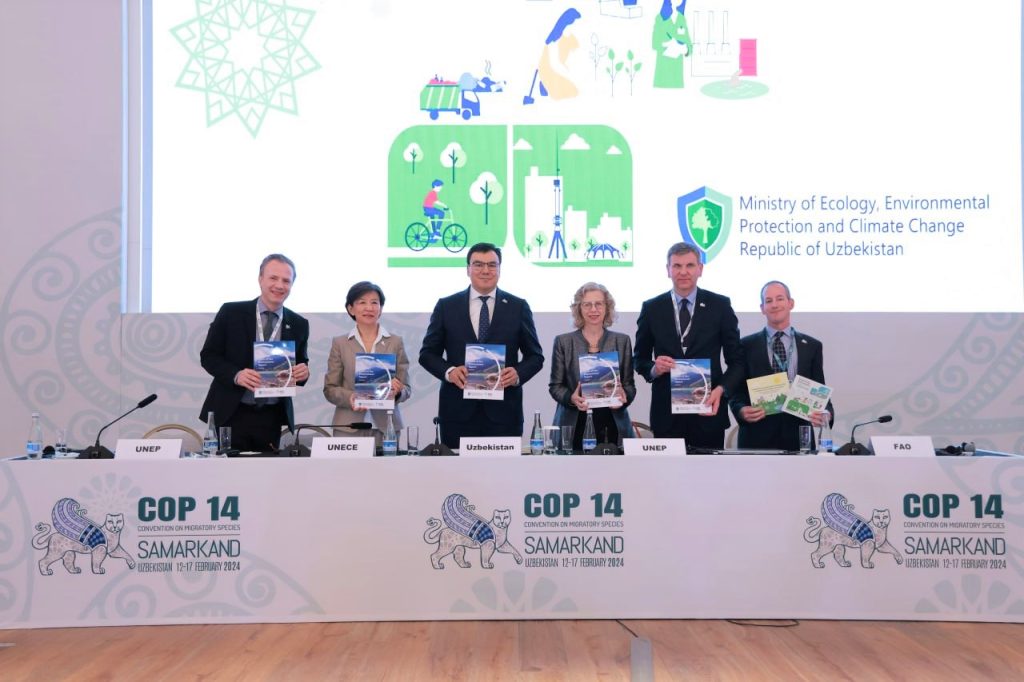Reduce Extinction Risk with Environmental Awareness A Guide

The Urgent Need for Environmental Awareness
Every day, we face a significant challenge: the alarming rate at which species are disappearing from our planet. Environmental awareness is no longer just a trendy topic; it is a crucial step towards ensuring the survival of countless species. As stewards of the Earth, we are called upon to acknowledge and address this pressing issue, which has profound consequences for biodiversity, ecosystems, and even human health.
Understanding the causes of extinction is vital in the fight against biodiversity loss. Here are a few key factors driving this critical situation:
- Habitat destruction: Urbanization, agriculture, and deforestation lead to the loss of homes for wildlife. For example, in the United States, over 90% of the coastal wetlands have been lost to development, threatening species such as the Snowy Plover and the Florida Manatee.
- Pollution: Chemicals in our land, air, and water threaten ecosystems and the creatures that inhabit them. In particular, plastic pollution has become an alarming issue, with millions of tons of plastic waste entering our oceans annually, causing dire consequences for marine life.
- Climate change: Shifting climates disrupt migration patterns and food sources. The American Robin, for instance, is experiencing changes in its breeding season due to climate shifts, affecting its population stability.
To tackle these challenges, informed individuals can make a difference through everyday actions that promote sustainability and awareness. Consider these impactful practices:
- Educate yourself: Stay informed about species at risk of extinction. Resources like the IUCN Red List provide updated information on the conservation status of various species, allowing you to understand which animals are in crisis.
- Support conservation initiatives: Participate in local or national programs aimed at protecting endangered species. Organizations like the World Wildlife Fund (WWF) and local wildlife rehabilitators often seek volunteers and donations to help with their efforts.
- Adopt sustainable practices: Reduce waste, recycle, and choose eco-friendly products. Simple actions like using reusable bags and avoiding single-use plastics can lead to significant positive changes.
This guide aims to equip you with knowledge and strategies to reduce extinction risk in your community and beyond. Your awareness and actions are crucial elements in shaping a sustainable future for all living beings. Start today; each effort counts and plays a part in preserving our planet’s incredible diversity for generations to come.

SEE ALSO: Click here to read another article
Understanding the Drivers of Extinction
To effectively reduce extinction risk, it is essential to recognize the primary drivers behind the alarming trend of species loss. Each factor interlinks with the others, creating a web of challenges that threatens not only wildlife but the intricate ecosystems they inhabit. By comprehending these drivers, individuals can make informed decisions that contribute to conservation efforts and promote environmental awareness.
One of the most pervasive issues is habitat destruction. Urban sprawl, agriculture expansion, and industrial activities have transformed vast landscapes, leading to the obliteration of natural habitats. For instance, the iconic California Condor is an emblem of conservation efforts, yet its survival hinges on the protection of its habitat. Urban development and agricultural practices continue to encroach upon its nesting grounds, indicating a critical need for mindful planning and conservation policies.
Pollution is another significant threat that cannot be overlooked. Toxic chemicals infiltrate our ecosystems, stemming from legal and illegal dumping, agricultural runoff, and industrial waste. The plight of the endangered Freshwater Mussel species serves as a stark reminder of this issue. These mussels face survival threats not only from habitat loss but also from the pollution that taints their water sources. In the United States alone, the flow of polluted runoff into rivers and lakes has dramatically increased, exacerbating the challenge of protecting aquatic biodiversity.
Similarly, climate change presents an unprecedented challenge to countless species across the globe. The U.S. Endangered Species Act lists numerous animals currently at risk due to changes in their habitats and food availability. The Polar Bear is one such species, as diminishing ice floes disrupt their hunting patterns, leading to decreased populations and food shortages. Understanding the impact of climate variability is critical for effective conservation measures and for ensuring that these vulnerable species have a fighting chance.
In light of these urgent challenges, individual actions gain paramount importance. Here are practical steps to consider:
- Reduce carbon footprint: Opt for public transportation, carpool, or bike to reduce greenhouse gas emissions. Every small change in daily commuting can contribute to lowering pollution levels.
- Engage in citizen science: Participate in local biodiversity monitoring projects. Organizations often seek volunteers to help track wildlife populations—data collected can be pivotal in conservation research.
- Spread awareness: Discuss environmental issues with friends and family. Increasing awareness in your community can inspire others to act, creating a ripple effect.
Being equipped with knowledge about the drivers of extinction is the first step in the journey to mitigate their effects. As you learn and take action, remember that every individual effort counts in the larger fight for biodiversity. Whether through direct conservation actions or community engagement, your choices today pave the way for a sustainable tomorrow.
| Category | Description |
|---|---|
| Habitat Preservation | Maintaining natural habitats is crucial for species survival, as it protects biodiversity and ecosystems. |
| Sustainable Practices | Implementing sustainable agricultural and fishing practices reduces resource depletion and fosters ecological balance. |
| Community Involvement | Engaging local communities encourages stewardship and empowers individuals to take action in conservation efforts. |
| Education and Awareness | Raising awareness about endangered species and their ecosystems enhances public understanding and support for conservation initiatives. |
The challenge of reducing extinction risk cannot be overstated, as it threatens ecological balance and human existence. By focusing on habitat preservation, we ensure that natural habitats remain intact, allowing ecosystems to thrive and recover from human impact. Additionally, adopting sustainable practices across industries like agriculture and fishing can significantly relieve stress on natural resources, thus allowing wildlife to flourish.
Furthermore, promoting community involvement fosters a sense of responsibility towards nature. When local populations become engaged in conservation efforts, the success of initiatives often increases dramatically. Education plays a pivotal role, as raising awareness about endangered species can inspire individuals to advocate for protection measures. The interplay of these elements is vital in creating a robust foundation for implementing effective strategies to mitigate extinction risks.
SEE ALSO: Click here to read another article
Collaborative Efforts and Community Engagement
Beyond individual actions, collaboration among various stakeholders—ranging from government bodies to local communities—is crucial in the fight against extinction. Conservation organizations play a vital role in mobilizing resources and expertise to combat the issues threatening wildlife. For instance, organizations like the National Audubon Society advocate for sustainable practices that protect bird habitats across the United States. Their programs not only focus on direct conservation efforts but also educate communities about the importance of preserving avian diversity.
Additionally, community-based conservation initiatives can empower local populations to take ownership of their natural resources. In many cases, indigenous communities, who have managed their environments sustainably for generations, possess knowledge that can be invaluable to current conservation strategies. Projects that encourage local involvement can help restore ecosystems while respecting traditional practices. The work of groups like the Nature Conservancy exemplifies this approach, providing local farmers with sustainable agriculture training to minimize land degradation.
Legislation also plays a pivotal role in reducing extinction risks. Policies aimed at protecting endangered species and their habitats, such as the Endangered Species Act, provide a framework for much-needed legal protections. However, utilizing this legislation effectively requires active public participation. Engaging in advocacy efforts—like attending public hearings, commenting on proposed policies, or joining conservation campaigns—can amplify individual voices and result in stronger protective measures for threatened species. With over 1,600 species listed as threatened or endangered in the United States, participation in the legislative process becomes paramount to ensure these laws are upheld and strengthened.
Education stands as a cornerstone for long-term change. Schools and educational institutions can integrate environmental studies into their curricula, fostering a new generation of ecologically conscious individuals. Programs that encourage schoolchildren to participate in hands-on projects—planting trees, creating wildlife gardens, or participating in clean-up efforts—serve as powerful tools for instilling values that prioritize biodiversity. Initiatives like the National Wildlife Federation’s Schoolyard Habitat program aim to transform school grounds into safe havens for wildlife, thereby inspiring students to become active participants in conservation.
The rise of social media has provided a platform for elevating environmental awareness and mobilizing action. Campaigns such as #EarthDay and #SavetheSpecies have garnered attention globally, demonstrating how collective voices can influence public opinion and policy. Utilizing social media can bring attention to lesser-known species and issues, driving community engagement and inspiring action, whether through petitions, fundraising efforts, or local events. Platforms like Instagram and Twitter can be leveraged to share findings from field studies, captivating images of wildlife, or personal conservation journeys, which can connect audiences with the urgent realities of extinction.
Ultimately, the combined force of informed individuals, engaged communities, and robust policies holds immense potential to combat extinction. Achieving this ambitious goal requires a multifaceted approach, and active participation from every sector of society. As environmental awareness continues to grow, it is essential that individuals recognize their role as catalysts for change, fostering a collective responsibility to ensure the survival of our planet’s rich biodiversity.
CHECK OUT: Click here to explore more
Conclusion
In conclusion, reducing extinction risk through environmental awareness is not merely a call to action but a vital necessity for the preservation of our planet’s biodiversity. As highlighted throughout this guide, the intersection of individual responsibility, community engagement, and collaborative efforts is paramount. By adopting sustainable lifestyles and supporting conservation initiatives, each person can contribute to a collective movement that seeks to safeguard threatened species.
Moreover, strengthening legislation and advocating for protective policies are crucial steps in creating a framework that ensures lasting change. The active involvement of citizens in advocacy efforts can amplify the need for legislation that protects endangered species and their habitats. It’s clear that public participation is essential to hold our governments accountable in their conservation efforts.
Education plays a transformative role in shaping future generations, instilling values centered around biodiversity. Integrating environmental studies in schools can equip young minds with the knowledge and skills necessary to think critically about their impact on the planet. Engaging initiatives offer hands-on experiences that transform awareness into action, preparing students to become informed stewards of the environment.
Lastly, the power of social media cannot be underestimated. Utilizing these platforms to spread awareness about conservation issues creates a ripple effect, mobilizing support and enthusiasm for endangered species conservation. As we advance towards the future, we must harness this connectivity as an engine for the ecological movement.
In closing, the path to mitigating extinction risks lies in a comprehensive approach that encompasses awareness, action, and advocacy across all sectors of society. Let us take collective responsibility, becoming champions for the myriad species that share our planet, as every effort counts in the battle against extinction.



